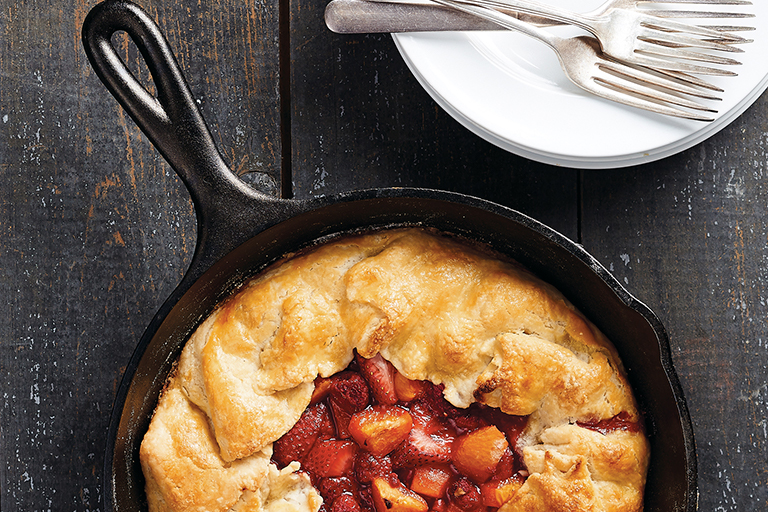Crust
1 1⁄4 cups unbleached all-purpose flour, plus more for dusting the work surface
2 tablespoons granulated sugar, plus more for dusting
1⁄4 teaspoon salt
8 tablespoons (1 stick) cold unsalted butter, cubed
1⁄4 cup ice water, plus more if needed
2 large egg yolks
1 tablespoon water
Filling
1 tablespoon cornstarch
1 tablespoon granulated sugar
Pinch of salt
2 1⁄2 cups mixed fresh berries (strawberries sliced if large), chopped peaches, and/or apricots pitted and cut in half
Confectioners’ sugar, for serving
Make the crust: In a food processor or a large bowl, combine the flour with the sugar and salt. Add the butter and pulse until crumbs form and no large chunks of butter remain, or use your fingers to pinch the butter into smaller, flour-coated chunks. You can also use a fork to mash smaller pieces of butter against the side of the bowl to break them up.
If using a food processor, transfer the mixture to a large bowl. In a small bowl or measuring cup, use a fork to mix together the ice water and 1 of the egg yolks. Evenly sprinkle that liquid over the flour-and-butter mixture. Gather it together with your hands, gently massaging it to distribute the moisture. Press the dough together with your hands until large clumps hold together. Avoid overmixing, and don’t worry if every last bit of flour isn’t incorporated; a bit of loose flour around the edges is okay. Add up to 1 teaspoon additional ice water at a time if the mixture is too dry to come together.
Place the dough onto a piece of plastic wrap about 18 inches long. Wrap the dough and press it together to form a cohesive mass. Pat it into a disk and refrigerate for 15 minutes. Preheat the oven to 400 degrees with one rack in the middle.
Make the filling: In a large bowl (you can use the same bowl used for the pastry), combine the cornstarch, granulated sugar, and salt. Add the fruit and toss until coated.
Dust a work surface with flour. Remove the dough from the refrigerator, remove the plastic wrap, and dust the top of the dough with flour. Use a rolling pin to press the dough into a rough circle about 11 inches in diameter. Uneven edges are perfectly okay.
Using your hands, carefully transfer the pastry to the skillet. (It may be easier if you fold it in half first and then unfold it in the skillet; make sure the top is lightly dusted with flour so the dough won’t stick to itself.) Once in the skillet, the pastry can run up along the edges at first; it will be folded down later. If the pastry tears, gently press it back together with your fingertips. Use a few drops of ice water as glue if necessary.
Using a slotted spoon, place the filling in the center of the pastry, leaving behind any juices in the bowl and allowing a border of about 2 inches of pastry (including any dough running up the sides). Fold the pastry edges toward the center, just covering the edge of the fruit. The center of the galette should not be covered with pastry, and the edges will be uneven. Beat together the remaining egg yolk and the tablespoon of water, lightly brush the pastry with this egg wash, then lightly sprinkle the pastry with the granulated sugar.
Place the skillet in the oven and bake until the pastry is golden and the fruit is bubbly, about 35 minutes.
Remove the skillet from the oven and transfer it to a rack to cool until warm but not hot, about 45 minutes. Any melted butter or fruit juices pooled along the edges can be carefully brushed on top of the fruit. This is optional.
Slice the galette into wedges and dust with confectioners’ sugar just before serving warm or at room temperature. Leftovers can be stored for 1 day at room temperature in the skillet, covered loosely with plastic wrap. Slices can be frozen in a zip-top freezer bag for up to 3 months.
Excerpted from Will it Skillet by Daniel Shumski (Workman Publishing). Copyright © 2017.

